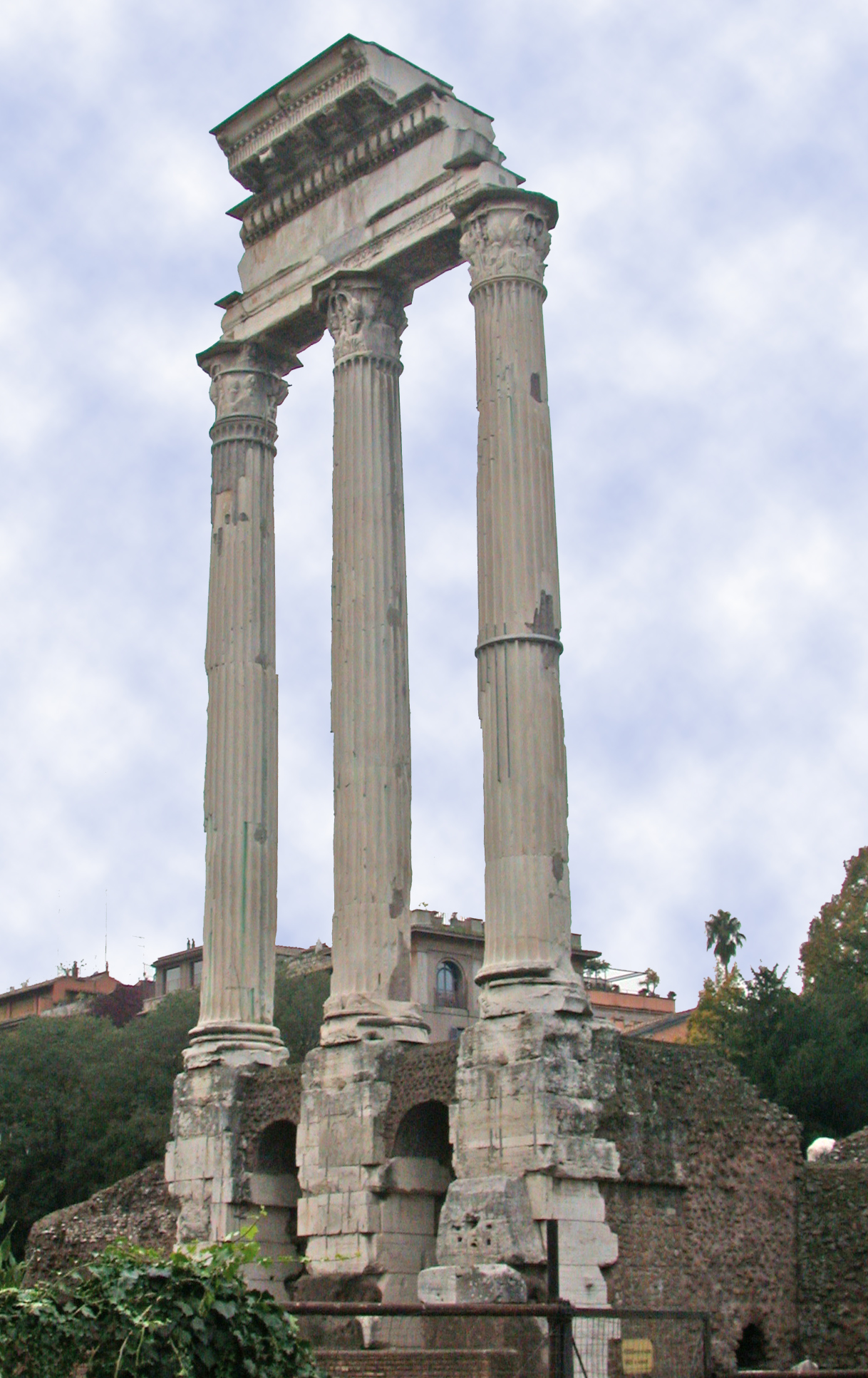- Temple of Castor and Pollux
Ancient monuments in Rome
name=Temple of Castor and Pollux
label_name=Temple of Castor and Pollux
tekst1=Temple of Castor and Pollux
label_x=0.38
label_y=0.37
location=Regione VIII "Forum Romanum"
date=495 BC
builder=Unknown builder
type=Roman Temple |The temple of Castor and Pollux is an ancient edifice in the
Roman Forum , originally built in gratitude for victory at thebattle of Lake Regillus (495 BC ). Castor and Pollux (GreekPolydeuces ) were theDioscuri , the "twins" of Gemini, the twin sons ofZeus (Jupiter) and Leda. Their cult came to Rome from Greece viaMagna Graecia and the Greek culture of Southern Italy.History
The last king of Rome,
Lucius Tarquinius Superbus , and his allies, the Latins, waged war on the infant Roman Republic. Before the battle, the Romandictator Aulus Postumius Albinus vowed to build a temple to the Dioscuri if Rome was victorious.According to legend Castor and Pollux appeared on the battlefield as two able horsemen in aid of the Romans. And, after the battle had been won they again appeared on the Forum in Rome watering their horses at the
Spring of Juturna thereby announcing the victory. The temple stands on the supposed spot of their appearance. Postumius’s son finished the temple in484 BC .In republican times the temple served as a meeting place for the
Roman Senate , and from the middle of the 2nd century BC the front of the podium served as a speaker's platform. During the imperial period the temple housed the office for weights and measures, and was a depository for the State treasury.The archaic temple was completely reconstructed and enlarged in
117 BC byLucius Cecilius Metellus Dalmaticus after his victory over theDalmatia ns.Gaius Verres again restored this second temple in73 BC .In
14 BC a fire that ravaged major parts of the forum destroyed the temple, andTiberius , the son of Augustus by a previous marriage ofLivia and the eventual heir to the throne, rebuilt it. Tiberius' temple was dedicated in 6 AD. The remains visible today are from the temple of Tiberius, except the podium, which is from the time of Metellus.Architecture
The
octostyle temple was peripteral, with eight Corinthian columns at the short sides and eleven on the long sides. There was a singlecella paved withmosaic s. The podium measures 32×49.5m and 7m in height. The building was constructed in "opus caementicium " and originally covered with slabs oftuff which were later removed. According to ancient sources the temple had a single central stairway to access the podium, but excavations have identified two side stairs.A classical ruin
As many other buildings on the Forum Romanum, the temple has suffered destruction, looting and ruin over fifteen centuries. The temple was standing in the fourth century, but nothing is known of its subsequent history, except that in the fifteenth century only three columns were standing. The street running by them was called "via Trium Columnarum". Today the podium survives without the facing, as do the three columns and a piece of the
architrave , one of the most famous features in the Forum.External links
* [http://penelope.uchicago.edu/Thayer/E/Gazetteer/Places/Europe/Italy/Lazio/Roma/Rome/_Texts/PLATOP*/Aedes_Castoris.html#in_Foro_Romano Aedes Castoris in Foro Romano] (Platner's Topographical Dictionary of Ancient Rome, with further links)
Wikimedia Foundation. 2010.
